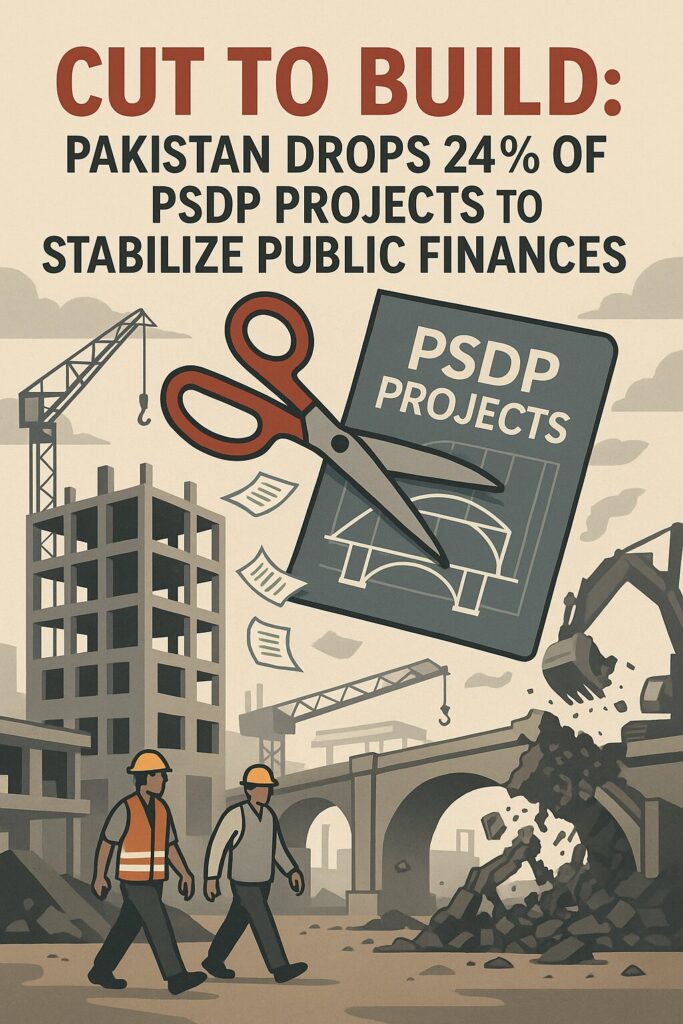
In a significant fiscal policy shift, the Pakistani federal government has decided to eliminate approximately 24% of development projects under the Public Sector Development Programme (PSDP) for the current fiscal year. This move, involving the discontinuation of 260 out of 1,092 projects, aims to streamline development efforts and address fiscal constraints going forward.
Rationale Behind the Decision
The Planning Ministry has established specific criteria to identify and abolish projects that are either slow-moving or misaligned with national priorities. Minister for Planning Ahsan Iqbal emphasized that the decision is not influenced by political considerations but is a strategic effort to enhance efficiency in resource allocation.
This initiative also aligns with the International Monetary Fund’s (IMF) recommendations for fiscal discipline. The IMF has urged Pakistan to remove provincial development projects worth Rs1.1 trillion from the federal budget, emphasizing adherence to constitutional responsibilities and the need for clarity in federal-provincial expenditure.
Pros of the Project Elimination
1. Enhanced Fiscal Discipline: By eliminating non-essential projects, the government can better manage its limited financial resources, reducing the fiscal deficit and aligning with IMF guidelines.
2. Focus on Priority Projects: The reallocation of funds allows for the completion of critical infrastructure and development projects, such as the Mohmand Dam and the Mainline-1 (ML-1) railway project, which are vital for economic growth.
3. Reduction of Throw-Forward Liabilities: The discontinuation of underperforming projects helps in reducing the backlog of incomplete projects, thereby minimizing future financial obligations.
Cons and Potential Challenges
1. Impact on Regional Development: The elimination of certain projects may disproportionately affect underdeveloped regions, potentially widening regional disparities and causing socio-economic tensions.
2. Employment Concerns: The discontinuation of projects could lead to job losses, particularly in the construction and related sectors, exacerbating unemployment issues.
3. Political Ramifications: The decision may face criticism from political stakeholders who perceive the cuts as neglecting their constituencies, leading to potential political unrest.
Implications for Public Finances
The government’s decision reflects a strategic shift towards fiscal consolidation and efficient public spending. By focusing on high-impact projects and eliminating redundant ones, the government aims to optimize the use of public funds, reduce the fiscal deficit, and meet international financial obligations.
However, the success of this approach depends on transparent implementation, effective communication with stakeholders, and measures to mitigate adverse socio-economic impacts. Ensuring that the benefits of prioritized projects reach the broader population is crucial for maintaining public trust and achieving sustainable economic development.
In conclusion, while the elimination of 24% of PSDP projects presents challenges, it also offers an opportunity for Pakistan to realign its development priorities, strengthen fiscal discipline, and lay the groundwork for long-term economic stability.
This Article was Published on publicfinance.pk.
